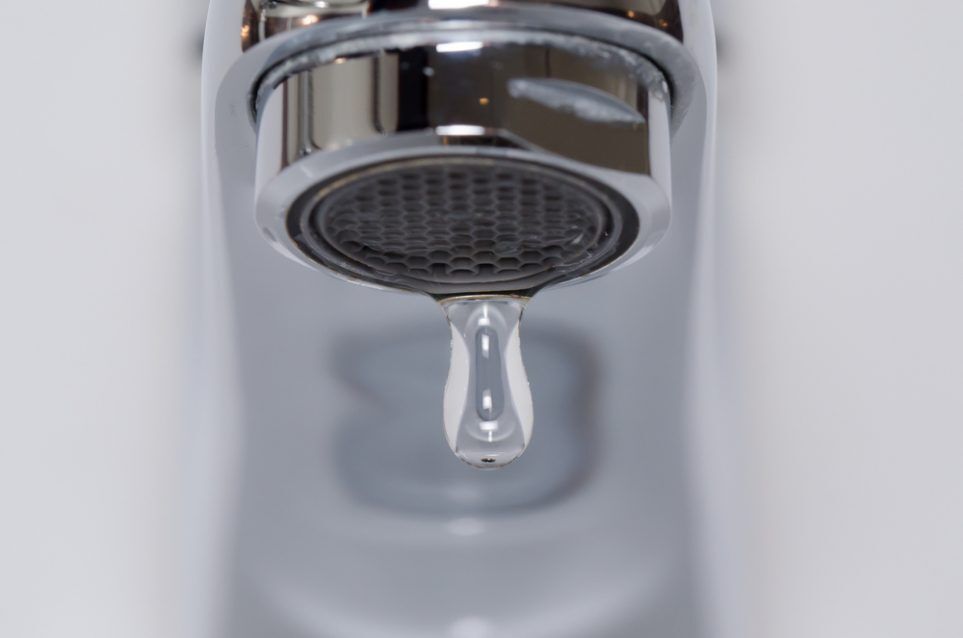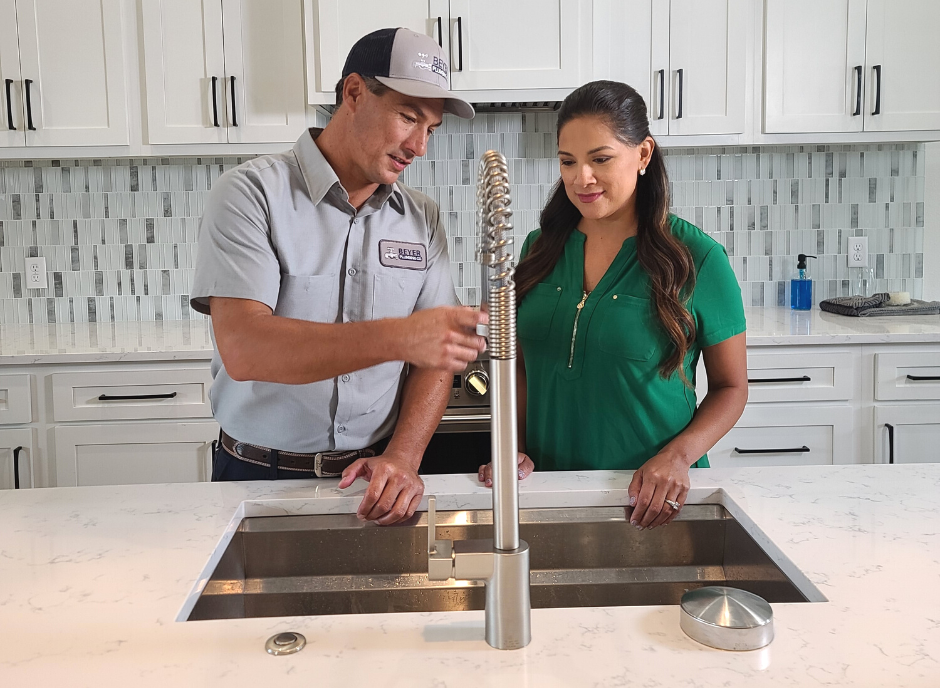Listed here underneath you can get additional extremely good information and facts in relation to Water Dripping from Faucet: Why and How to Fix.

Leaking faucets might seem like a small aggravation, however their effect goes beyond simply the aggravation of the noise. From wasting water to sustaining unneeded economic expenses and health threats, disregarding a dripping tap can lead to numerous repercussions. In this write-up, we'll explore why it's vital to address this typical household problem without delay and efficiently.
Wastefulness of Water
Environmental Effect
Trickling faucets contribute dramatically to water wastage. According to the Environmental Protection Agency (EPA), a solitary faucet dripping at one drip per second can lose greater than 3,000 gallons of water per year. This not only strains water resources however likewise impacts ecological communities and wild animals dependent on them.
Step-by-Step Overview to Dealing With a Dripping Tap
Tools Required
Prior to trying to repair a leaking tap, gather the required devices, consisting of a flexible wrench, screwdrivers, replacement parts (such as washing machines or cartridges), and plumber's tape.
Usual Faucet Issues and Their Solutions
Determine the kind of tap and the details concern causing the drip. Common issues include damaged washers, corroded valve seats, or damaged O-rings. Describe manufacturer instructions or on the internet tutorials for step-by-step assistance on repair services.
Financial Expenses
Boosted Water Costs
Past the environmental impact, dripping faucets can pump up water bills significantly. The collected waste with time equates into greater energy expenses, which can have been prevented with prompt repair services.
Prospective Residential Property Damages
Moreover, prolonged trickling can cause harm to fixtures and surfaces surrounding the faucet. Water accumulation can create discoloration, deterioration, and also architectural problems if left unattended, resulting in additional repair prices.
Wellness Worries
Mold and Mold Development
The continuous existence of moisture from a trickling tap creates a perfect setting for mold and mold growth. These fungi not only compromise indoor air quality yet likewise pose health and wellness threats, especially for people with respiratory problems or allergies.
Waterborne Illness
Stationary water in dripping faucets can come to be a breeding ground for microorganisms and other pathogens, boosting the threat of waterborne conditions. Contaminants such as Legionella germs prosper in stationary water, possibly resulting in major health problems when consumed or breathed in.
Do it yourself vs. Specialist Repair service
Pros and Cons of DIY Repair
While some may try to deal with a trickling tap themselves, DIY fixings include their very own collection of challenges. Without proper understanding and devices, DIY efforts can aggravate the issue or cause incomplete repair work, lengthening the problem.
Benefits of Employing a Specialist Plumber
Hiring a specialist plumber makes sure that the underlying root cause of the leaking faucet is attended to efficiently. Plumbing professionals possess the experience and devices to detect and repair tap problems successfully, saving time and reducing the threat of further damage.
Ecological Responsibility
Private Contribution to Preservation
Taking duty for dealing with trickling faucets straightens with more comprehensive initiatives toward water conservation and ecological sustainability. Every person's actions jointly make a substantial effect on preserving priceless resources.
Lasting Living Practices
By focusing on prompt fixings and embracing water-saving routines, individuals add to sustainable living methods that benefit both present and future generations.
Safety nets
Routine Upkeep Tips
To prevent leaking taps, carry out regular maintenance such as cleaning up aerators, evaluating for leaks, and changing worn-out parts without delay. Additionally, think about setting up water-saving tools or updating to more effective fixtures.
Value of Prompt Services
Addressing dripping faucets as soon as they're discovered stops further water wastage and possible damages, inevitably conserving both water and cash in the future.
Effect On Property Value
Assumption of Well-Maintained Building
Keeping a property in good condition, consisting of attending to maintenance concerns like trickling taps, enhances its regarded worth and desirability amongst prospective purchasers or renters.
Impact on Resale Worth
Qualities with well-kept plumbing fixtures, consisting of faucets, command greater resale worths in the real estate market. Addressing trickling faucets can add to a positive impression throughout property assessments and negotiations.
Verdict
Addressing a trickling faucet exceeds plain benefit; it's a crucial step toward saving water, reducing monetary costs, and securing wellness and residential or commercial property. Whether with do it yourself repairs or specialist assistance, acting to take care of trickling taps is a tiny yet impactful means to advertise responsible stewardship of resources and contribute to a healthier, more sustainable future.
How to Fix a Leaky Faucet: Step-by-Step Repair Guide
A leaky faucet may seem like a simple annoyance, but if it's not fixed promptly, that leak could cost hundreds to potentially thousands. From water damage to mold, mildew, and high water bills, even a tiny leak can be catastrophic if left unattended. Damage like this can even affect the overall value of your home, so it's important to take the right approach for leaky faucet repair. You may need the help of a plumber in some cases, but we've got a few tips you can try on how to fix a leaky faucet before calling the pros.
Four Faucet Types
When you're learning how to fix a leaky faucet, the first step is knowing what kind of faucet you're working with! There are four common types.
Cartridge Faucets
Cartridge faucets come in one- or two-handled varieties. In one-handled cartridge faucets, hot and cold water combines in a single cartridge. In the two-handled versions, hot and cold water are controlled separately and mixed in the faucet.
Ball Faucets
Ball faucets have a single lever you push up and down to adjust the pressure and rotate to change the temperature. A slotted metal ball controls the amount of water allowed into the spout.
Compression Washer Faucets
They're the oldest type of faucet, but they're still used in many homes — especially older ones. Compression faucets have two separate handles that, when turned, raise or lower the washer that seals a water valve. This valve stops water from flowing through the faucet when it is turned off.
Disc Faucets
Disc faucets rarely need to be repaired due to their maintenance-free design. The water flow is controlled by two discs — the upper one raises and lowers against a fixed lower disc, creating a watertight seal. If your disc faucet starts leaking, you may need to replace the seals or clean residue buildup from the inlets.
Fixing a Leaky Faucet
Step 1: Turn Off the Water
Whether you're learning how to fix a leaky bathtub faucet or how to fix a leaky kitchen faucet, always turn off the water supply to your working area when you're fixing a leak. The last thing you want is a flood added to your list of things to fix.
Look for the shutoff valves below your sink or around the tub and turn them clockwise to stop the water flow. If your faucet doesn't have shutoff valves, you may need to turn off the water for the whole house. Check to make sure it's off by turning the faucet on. If nothing comes out, you're ready to start the repair.
Step 2: Take Apart the Faucet
How you disassemble your faucet depends on the type of fixture you have. You can use a flathead screwdriver to remove the caps on top of the handle or handles for cartridge and compression faucets. Inside, you should see handle screws. Unscrew these with a screwdriver to remove the handle.
Disc- and ball-style faucets will typically have an inlet screw near the handle, and removing that will reveal the interior of the faucet.
Detach the Valve Stem
For cartridge- and compression-style faucets, you'll see the inner valve stem or cartridge once you remove the faucet handles. If you have a compression faucet, unscrew the brass valve stem. If you have a cartridge faucet, pull out the cartridge. If your cartridge has been in place for a while, it may require some tools or extra force to remove it due to mineral deposits.
Examine and Replace Parts
Once you've removed the parts, check them out to confirm what needs to be replaced. You may see corroded rubber washers, O-rings, stems, or cartridges. On a ball-style faucet, check the seats and springs for damage.
If you need to repair a leaky disc faucet, check the inlet and seals on the lower disc.
Once you determine what parts must be replaced, visit your local hardware store. Bring the damaged parts with you to ensure you can purchase the correct components to replace them.
Clean Valves and Faucet Cavity
If you've removed a stem or cartridge, you may notice mineral buildup in the faucet's threads. Use white vinegar to clean the valve seat by soaking it for a few minutes, then scrub it away with a soft toothbrush and rinse with warm water. You can also clean the interior of the faucet in the same way.
Reassemble the Faucet
Once your faucet is cleaned and the required parts have been replaced, it's time to reassemble it. Put the pieces back together and slowly turn the water supply back on. Doing this slowly is crucial because too much initial water pressure can damage the new hardware you've just installed.
https://homewarranty.firstam.com/blog/how-to-fix-leaky-faucet

Do you enjoy more info about How to Fix a Dripping or Leaky Faucet ? Give feedback directly below. We will be glad to listen to your feelings about this content. We are looking forward that you visit us again before long. Be sure to take the time to share this blog posting if you appreciated it. I love your readership.